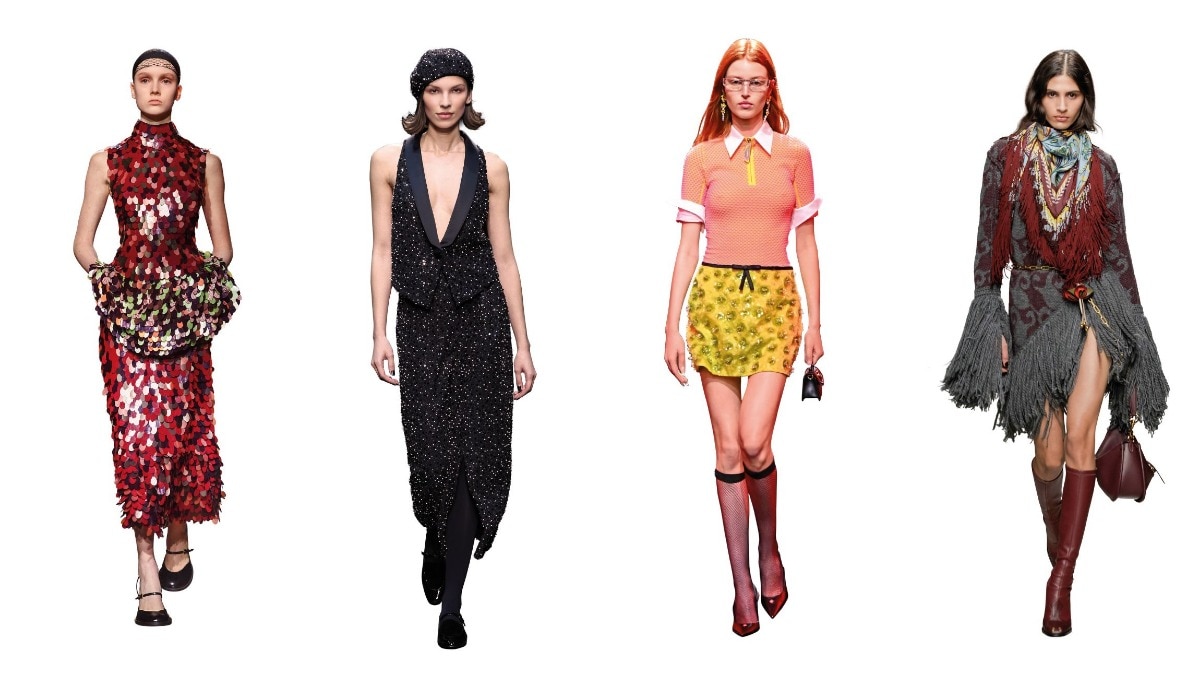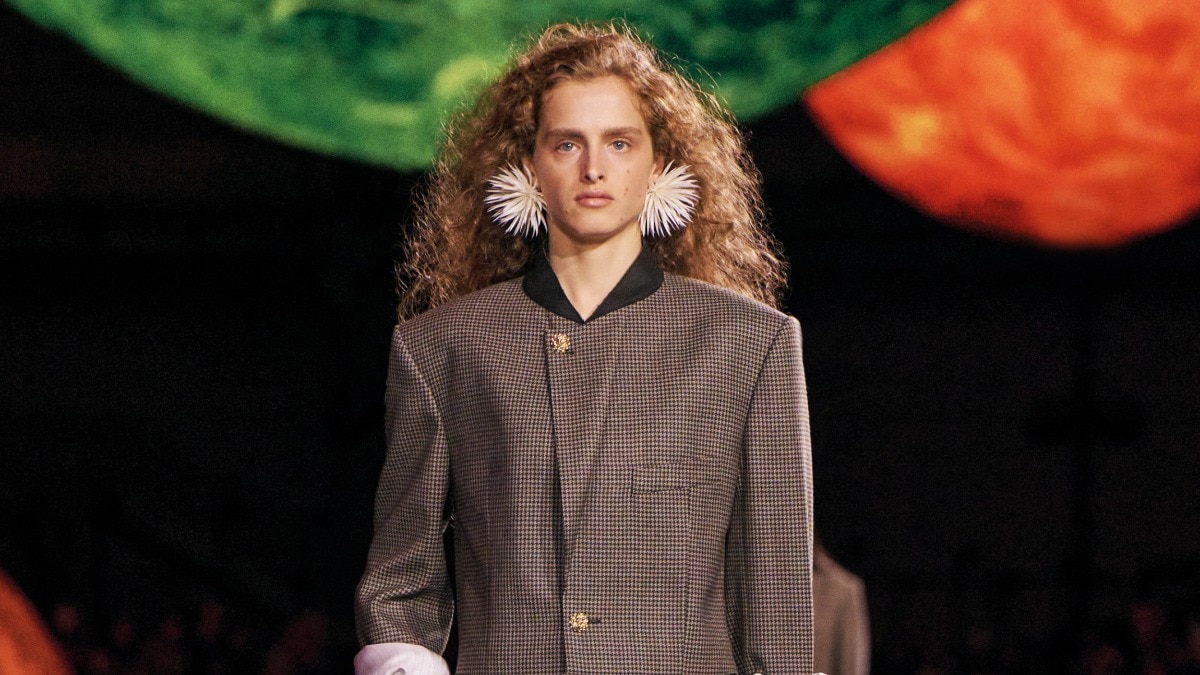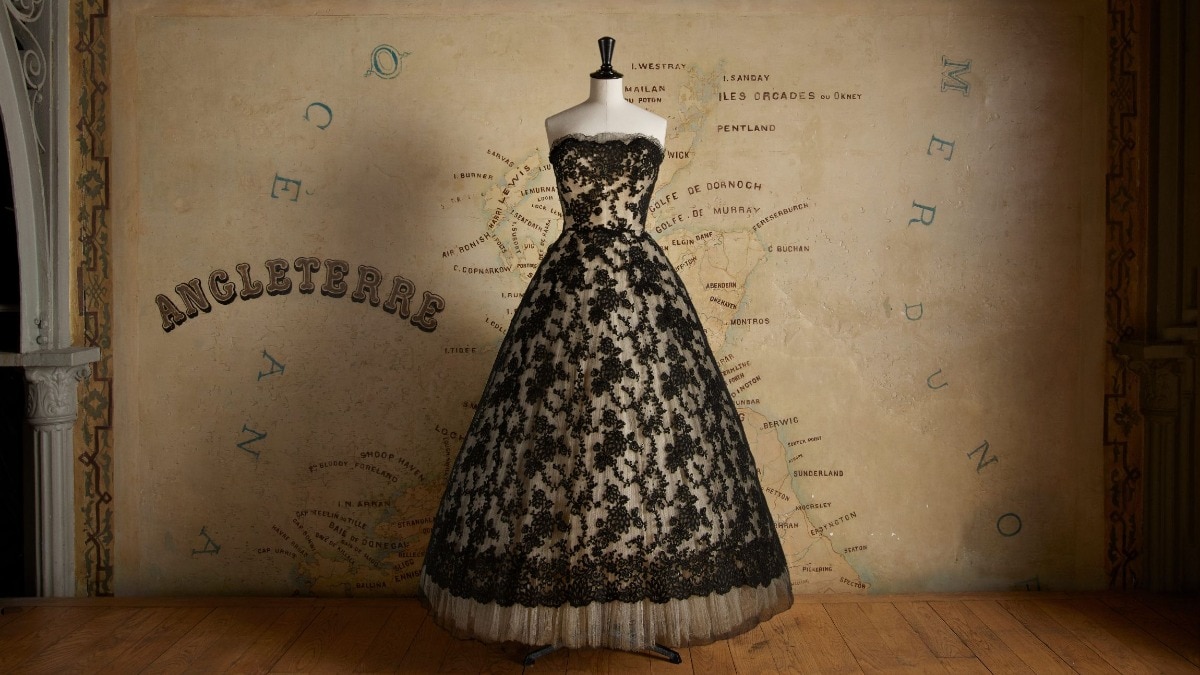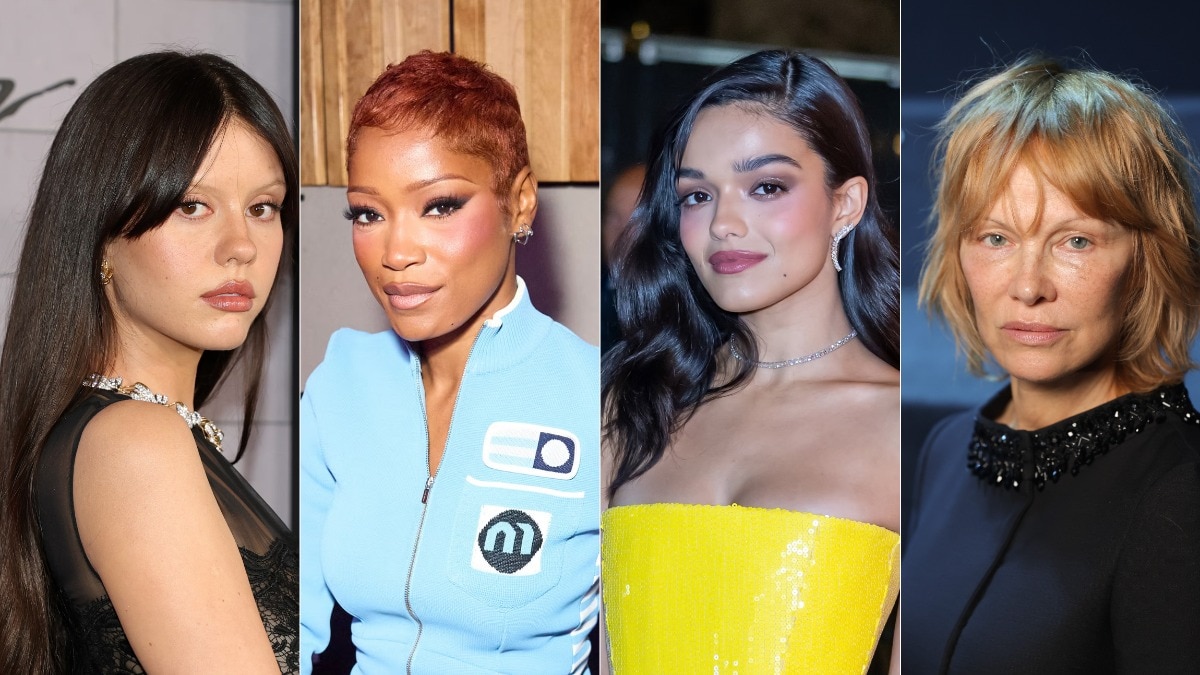
Four Indian designers showcase homegrown craftsmanship and textiles at the BRICS+ Fashion Summit
Ritesh Kumar, Shruti Sancheti, Naushad Ali, and Gaurav Khanijo pay homage to India’s cultural heritage in Moscow.


Winter in Moscow twinkles as the Christmas lights go up. On one snowy evening in November, four Indian designers showcased their Autumn/Winter collection at the BRICS+ Fashion Summit held in Pashkov House. The slush was almost ankle-high, the sun had set. Against this backdrop, the neoclassical mansion, which overlooks the western wall of the iconic Kremlin, looked straight out of a Tarkovsky movie. Inside the milky-walled structure, an audience of over 100 had gathered to root for four Indian designers—Ritesh Kumar, Shruti Sancheti, and Naushad Ali of their eponymous labels, and Gaurav Khanijo from Khanijo. They were handpicked from across the country by the Fashion Design Council of India (FDCI), and formed the Indian delegation to represent the country’s fashion industry alongside China, Brazil, South Africa, Turkey, and a few other countries. While Ritesh and Gaurav have their roots in Delhi, Shruti is based out of Nagpur, and Naushad hails from Pondicherry. The designers showcased pieces that paid homage to homegrown textiles and craftsmanship—think everything from handspun khadi, matka silk, and woven cotton, to running stitches and more.

ON FOREIGN SHORES
Post-pandemic, the prominence of the Indian fashion industry on the global stage has been undeniable. From Selena Gomez dressed in Rahul Mishra at Rare Impact Fund Gala and Taylor Swift opting for a stack of Misho bangles in her Karma music video, to Cardi B donning a cobalt blue Gaurav Gupta gown at the 2023 Grammy Awards red carpet—if there was ever a time for Indian fashion to sparkle on international platforms, it is now. The ‘Indian Fashion Show’, as a part of the BRICS+ Fashion Summit, was an extension of this movement. Gaurav’s collection had sleek, sharp silhouettes comprising jackets, pleated pants, dhotis, and shirts with delicate embroidery taking the centre stage while Shruti paid homage to the nation’s history by reviving the allure of khadi. Silk printed dresses and co-ord sets claimed the spotlight in Naushad’s collection as he recounted the history of Tharangambadi, formerly Tranquebar, a town in Tamil Nadu, through his designs. On the other hand, Ritesh skillfully blended luxury and comfort with handwoven quilted high-neck tops being the highlight of his collection. Each designer contributed to the retelling of Indian fashion on foreign shores, transforming the runway into a canvas where diverse cultural inspirations and expressions converged.

DIVERSITY ON RUNWAY
India’s cultural diversity also shone through during the fashion show and it was Indian nuances at its best. While Gaurav’s models had alta-painted feet, the entire show was choreographed on the music of a live Manganiar [folk musicians from Rajasthan] with National Award-winning singer, Samandar Khan, singing folk songs as models walked on the runway for the Indian designers.
The show was sandwiched between showcases by designers from China, South Africa, Turkey, and Argentina and served as a platform for regional designers to showcase indigenous textiles and workmanship on a global platform. The rest of the BRICS+ Fashion Summit brought together around 130 fashion brands from 20 countries, each presenting distinguished designers and their collections. We also spotted the presence of globally acclaimed brands such as Lucas Leão from Brazil, CHNNYU Studio representing China, David Tlale showcasing South African fashion, and Alena Akhmadullina representing Russia, alongside an intriguing showcase by Sadaels, a Belgian-Argentine label based in Paris.
The summit wasn’t solely about the runway; it also served as a knowledge hub with a gathering of international professors, seasoned experts, and industry insiders, all engaging in discussions centred around the challenges faced by the fashion industry. The lectures focused on the broader context of modern fashion, addressing social and cultural nuances that shape the industry. The event became a haven for fashion enthusiasts, offering a visual feast of cutting-edge designs and a comprehensive exploration of the intellectual and strategic facets of the global fashion arena. The convergence of established names and emerging talents, coupled with insightful discussions, made the BRICS+ Fashion Summit a paradise for those passionate about the multifaceted world of fashion.
Also Read: The hottest moments from the New York Fashion Week 2024
Also Read: Who is couture for really?










